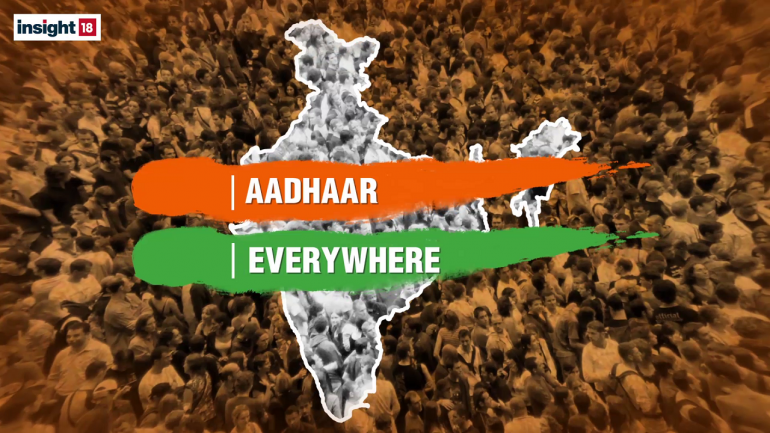The Aadhaar judgment is a rushed and ill-thought-out one, and leaves many issues unsettled and unclear.
For a case that has been litigated over the last six years, involving 38 days of final hearings, two references to constitution benches, and has finally ended in three judgments totalling 3.5 lakh words, the Supreme Court’s final verdict on the validity of Aadhaar settles too few questions on the matter.
The majority judgment (by Justice A K Sikri, on behalf of himself, Chief Justice of India [CJI] Dipak Misra and Justice A M Khanwilkar) has a feeling of incompleteness writ large through it. There are placeholders in the text where entire sections of the judgment were supposed to be, which suggests that this was a rush job given CJI Misra’s approaching retirement date. Apart from this, the reasons afforded to support the conclusions arrived at do not hold up to scrutiny. One gets the sense that the conclusions of the judgment were predetermined and the reasons for them were worked out so as to fit into the conclusions.
To take just one example, in addressing arguments raised about Aadhaar affecting the constitutional idea of a limited government, the majority judgment makes no effort at all to engage with the argument, or to try and understand how Aadhaar might affect or attack it. Instead, the whole notion is dismissed on the basis of the Court’s past judgment in Binoy Viswam v Union of India, without any real attempt at answering the many issues raised by the counsel for the petitioners. In the Binoy Viswam case, the Court was only concerned with one use of Aadhaar (in the context of income tax), but in the present case the scope of the challenge was different, with the Court having been called upon to see the entire Aadhaar (Targeted Delivery of Financial and Other Subsidies, Benefits and Services) Act, 2016 and all its myriad uses as being destructive for the idea of limited government. Yet, the majority judgment does not address this argument at all, simply brushing it aside by pointing out the odd provision or two it had already struck down.
The unwillingness to seriously engage with the arguments of either side is especially frustrating in what should be a landmark judgment. Here is an issue that has consumed much public
discourse, has a tangible effect on people’s lives, and has great impact on governance in India, and, yet, the majority judgment of the Supreme Court is simply unable to give well-reasoned answers to the questions before it. Just as aggravating is the fact that the three opinions rendered in the case (including Justice D Y Chandrachud’s dissenting and Justice Ashok Bhushan’s concurring judgments) do not engage with each other at all. It is almost as if the three judgments were written in parallel, and the dissenting voice seems to have had no bearing on the majority and concurring judgments of the Court.
This is a pity as it contrasts with the clarity of thought that informed six concurring opinions in the judgment of the nine-judge bench in the very same case where the Supreme Court had upheld the right to privacy in clear and unambiguous terms, against intervention by both state and private actors. The clear formulation and articulation of the nature and scope of the right in K S Puttaswamy v Union of Indiahas been cited on multiple occasions by the Supreme Court itself, not least in the striking down of Sections 377 and 497 of the Indian Penal Code in two separate cases. Yet, ironically enough, when it comes to applying the right to privacy to Aadhaar itself, the majority of judges cannot seem to bring themselves to do it. The differences in the terms “compelling state interest,” “legitimate state interest,” and “public interest” as they occur in the various opinions in the Puttaswamy judgment are picked apart to find just the right phrases needed to justify their predetermined conclusions on the validity of the Aadhaar law.
Amidst this, Justice Chandrachud’s minority opinion is a breath of fresh air. It is detailed, well-reasoned, and unafraid in arriving at its conclusions. His judgment goes to the heart of what the fundamental problems with Aadhaar are: invasion of privacy, all-pervasive state control, and exclusion. Justice Chandrachud also has no doubt that passing the Aadhaar Act as a money bill was a “fraud on the constitution.” On this reason alone he could have struck down the entire law, but he has also gone into the problematic provisions of the act in depth to ensure that any future laws also stay within the confines of constitutionality. Justice Chandrachud’s judgment strikes down many more provisions of the Aadhaar Act and its regulations, finding them to be in violation of the right to privacy among other fundamental rights.
India’s Supreme Court has had a history of the minority opinions in important fundamental rights cases getting recognised much later as having been right all along. Justice Fazl Ali’s minority opinion in A K Gopalan v State of Madras, Justice Subba Rao’s in Kharak Singh v State of Punjab and Justice H R Khanna’s dissent in ADM Jabalpur v Shiv Kant Shukla are, perhaps, the most famous examples (or as Justice Rohinton Fali Nariman calls them, “the three great dissents”). Will Justice Chandrachud’s dissent join this acclaimed pantheon? With the many still-unsettled questions about Aadhaar, one cannot rule out this possibility in the near future.
https://www.epw.in/journal/2018/39/editorials/hope-dissent.html

Leave a Reply